

Research - International Research Journal of Plant Science ( 2022) Volume 13, Issue 3
Received: 03-May-2022, Manuscript No. IRJPS-22-62557(PQ); Editor assigned: 05-May-2022, Pre QC No. IRJPS-22-62557; Reviewed: 19-May-2022, QC No. IRJPS-22-62557; Revised: 23-May-2022, Manuscript No. IRJPS-22-62557(R); Published: 30-May-2022, DOI: http:/dx.doi.org/10.14303/irjps.2022.014
Cancer is one of the leading causes of death globally and the numbers of cancer related deaths are increasing steadily in India as well as in Tripura. According to WHO the ‘Global battle against cancer won’t be won with treatment alone, effective prevention measures urgently needed to prevent cancer crisis'. This article highlights the cancer status of Tripura, some anti-cancer vegetables and spices available in our locality and their active compounds. The main objective of this article is to aware people, how to prevent cancer using anti-cancer vegetable and spices. Consumption of these anti-cancer vegetables and spices may be an alternative intervention to inhibit or delay carcinogenesis.
Cancer status of Tripura, Anti-cancer vegetables, Spices, Active compounds
Globally, there is a decline in cancer death rates since 1991 which has resulted in an overall drop of 27%, translating to approximately 2.6 million fewer cancer deaths (Jemal et al., 2019). But in India the cancer case increases every year (http://www.indiastat.com) Figure 1. Cancer is the second most common disease in India responsible for maximum mortality almost 0.3 million per year (Ali et al., 2011). As per records of India stat (http://www.indiastat.com) our small state Tripura is not an exception. The estimated number of cancer (male and female) cases in Tripura is increasing day by day (Figure 2). The number of female cancer cases in Tripura is slightly higher than that of males. In Tripura proportion of lung cancer in men is the highest, followed by esophagus and larynx and in women, cervix uteri cancer is the highest, followed by breast and gall bladder in Tripura (NCDIR, 2017).
The adult risk factors for various cancers in India are tobacco smoking (14.7%), alcohol consumption, physical inactivity (12.1%), obesity (4.7%), and household solid fuel uses (63%). [World Health Organization - Cancer Country Profiles, 2014, India]. The other risk factors are pollutants which depend on the concentration, intensity and exposure. The risk becomes highly increased where workers are exposed to ionizing radiation, carcinogenic chemicals, certain metals exposure etc. (Prakash et al., 2013). Other than these, I think the other important risk factor is consumption of less quantity of anti-cancer vegetables and spices. Now a day’s urban people are interested in fast food rather than natural plant based food. Plants have been used for a long time to cure various lethal diseases such as cancer. According to estimates of the World Health Organization, 80% of the world population, especially those living in Asia, Latin America and Africa, still rely on herbal medicine. Scientific evidence showed that more than 60% anticancer agents are plant products (Cragg & Newman, 2005). The secondary metabolites in the plant kingdom such as polyphenols, flavonoids, reveratrol and brassinosteroids have been studied for their potential use as anti-cancer agents (Greenwell & Rahman, 2015).
Vegetables, Spice and Their Phytochemicals Can Prevent Cancer
Oroxylum indicum
O. indicum is a medium sized deciduous tree commonly known as Sonapatha, Shyonaka, Naukagas, or Shivnak. The young sword-like fruits are used as vegetables by the tribal people of North East India. The compound baicalein isolated from O. indicum has shown anti-tumour activity on human cancer cell lines and inhibited the 50% proliferation of HL-60 cell lines at a concentration of 25-30 μM (Roy et al., 2007).
Curcuma longa
C. longa is a spice of native India commonly called turmeric and the active compound of turmeric called curcumin, which is both nontoxic as well as diversified in its inhibitory effects on a multitude of pathways involved in carcinogenesis and tumor formation. Curcumin significantly inhibited the growth of human breast cancer cell MCF-7 by inducing apoptosis in a dose- and time- dependent manner, accompanied by a decrease in MCF-7 cell viability (Koohpar et al., 2015). Curcumin exhibits anti-cancer activities in various stages of carcinogenesis, including inhibition of oncogene activation, prevention of cancer-related inflammation, inhibition of cancer cell proliferation, induction of apoptosis and anoikis, prevention of metastasis, and sensitization of cancer cells to chemotherapy (Pongrakhananon & Rojanasaku, 2011).
Capsicum frutescens
The compounds present in red chili pepper such as capsaicin have numerous medicinal benefits. It can stimulate the anti-tumorigenic/tumor-suppressive signaling pathway and related transcription factors, whereas it inhibits oncogenic signaling pathways and tumor promoters (Clark & Lee et al., 2016). The anti-cancer activities were confirmed using animal models and human cancer cell lines (Hamikara et al., 2016).
Zingiber officinale
Z. officinale is an herbaceous perennial, the rhizomes of which are used as a spice. The compound 6-gingerol was found more effective than extract even at lower doses in inhibition of endothelial cell tube formation (Brown et al., 2009).
Mushrooms
From the early age mushrooms have been regarded by mankind as a cooking wonder and folk medicine in Oriental practice. From decades, it has witnessed the overwhelming attention of western research organization in the pharmaceutical potential. The mushrooms showed anti-cancer activity belonging to the genus Phellinus, Pleurotus, Agaricus, Ganoderma, Clitocybe, Antrodia, Trametes, Cordyceps, Xerocomus, Calvatia, Schizophyllum, Flammulina, Suillus, Inonotus, Inocybe, Funlia, Lactarius, Albatrellus, Russula, and Fomes (Patel & Goyal, 2012).
Broccoli, cabbage, cauliflower, brussels sprouts
Qazi et al showed that sulforaphane, derived from broccol inhibits the proliferation of Barrett esophageal adenocarcinoma cells at a nontoxic concentration, reduces tumor growth in vivo, and significantly enhances the anti-cancer activity of other chemotherapeutic and antiproliferative agents in Barrett esophageal adenocarcinoma (Qazi et al., 2010). Cover et al in their study showed that lower doses of tamoxifen, an antiestrogen for breast cancer patients and indole-3-carbinol inhibited MCF-7, estrogendependent human MCF-7 breast cancer cell line and CDK2- specific activity to the same extent as higher doses of either agent added individually (Cover et al., 1999).
Dillenia indica
The local name of D. indica is chalita or ow-tenga. Traditionally its leaves, bark and fruits decoction are given orally for treatment of cancer and diarrhoea in the tribal areas of Tripura and Mizoram. The fruits (calyx) are sour in taste and are used in the preparation of jam, jellies, chutnis as well as flavouring agent in curries. The methanolic extract of fruits showed significant anti-leukemic activity in human leukemic cell lines U937, HL60 and K562. The compound betulinic acid isolated from D. indica showed IC50 at lower concentrations of 13.73, 12.84, 15.27 μg/ml in U937, HL60 and K562 cell lines respectively (Kumar et al., 2010) than fruit extract.
Parkia javanica
The tender fruits are edible and the local Manipuri people use it as vegetables. It is cooked with fish (‘gudok’) and used for gastric problems by the local people. P. javanica extract caused significant in vitro cytotoxicity in sarcoma-180 (S- 180), A549, AGS, and MDA-MB435S cancer cells (Das et al., 2017). The preliminary efforts of our group have also revealed fairly anti-cancer activity (IC50: 11 ‐7μg/mL) of P. javanica plant extract across a limited variety of tissuespecific cancer cell lines.
Enhydra fluctuans
E. fluctuans Lour. (Compositae) is an edible, semi-aquatic, herbaceous vegetable plant. Two flavonoids, baicalein 7-O-glucoside and baicalein 7-O-diglucoside, were isolated from the ethyl acetate fraction of E. fluctuans and tested for Ehrlich's Ascites Carcinoma in mice, which caused a significant decrease in the tumor cell volume and increase of life span of mice (Sannigrahi et al., 2010).
Tomato
The ability of vegetable, tomatoes and its active compound lycopene have been examined in a various experimental models of prostate carcinogenesis and tumorigenic progression. The compound lycopene reduces the risk of prostate cancer (Nobile et al., 2009).
The name and active compounds of the above anti-cancer vegetables and spices are listed in Table 1.
| Name/scientific name of the plants with plant part used | Active compounds/extracts with reference |
|---|---|
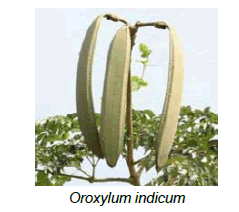 |
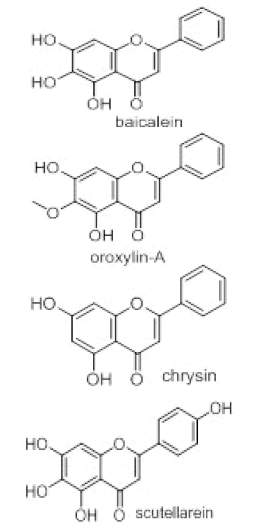 (Kalra & Kaushik, 2017); (Dinda et al., 2015); (Epstein et al., 2010) |
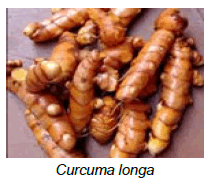 |
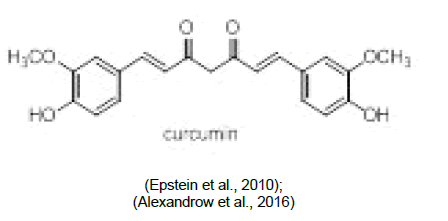 |
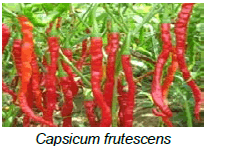 |
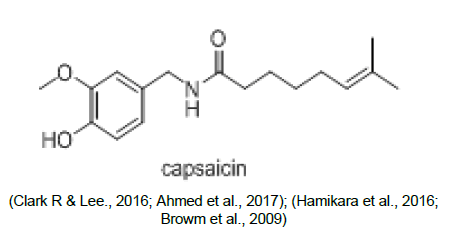 |
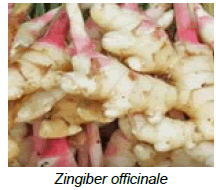 |
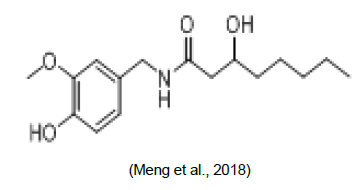 |
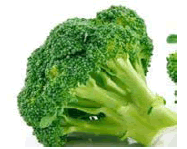 broccoli, cabbage, cauliflower, Brussels sprouts, and bok choy |
(Aggarwal & Ichikawa 2005); (Kim et al., 2007); (Kandala & Srivastava., 2010); (Ahmad et al., 2009) |
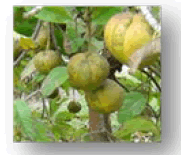 Dillenia indica |
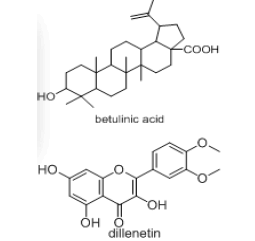 (Kumar et al., 2010; Gandhi & Mehta et al., 2013) |
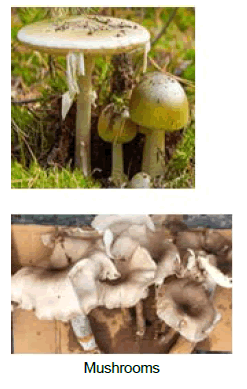 |
 |
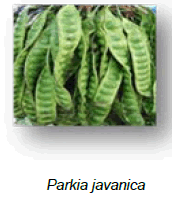 |
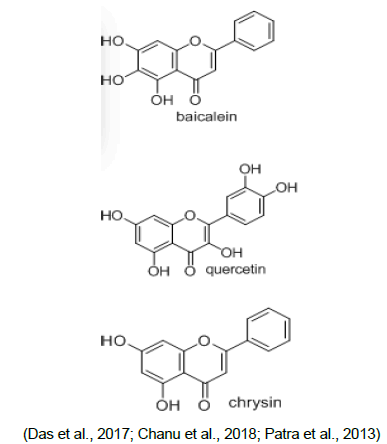 |
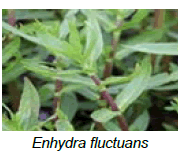 |
 |
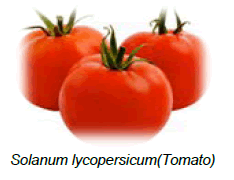 |
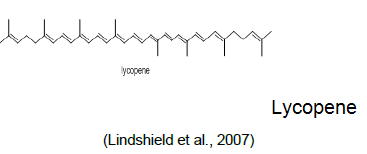 |
Table 1. The vegetables, spices and their anti-cancer compounds/extracts.
From the above discussion it is clear that vegetables and spices have an enormous potential in the prevention and treatment of cancer. The cancer case in India as well as our state Tripura is increasing day by day and to prevent it we have to intake more and more anti-cancer vegetables and spices. But most of the plant species like Oroxylum indicum, Perkia javanica, Dillenia indica, wild edible mushrooms etc. are day by day becoming extinct in Tripura due to huge rubber plantations, deforestation, etc. Some spices or vegetables are avoided by the people due to ignorance of their scientific knowledge of anti-cancer activity. This is a small effort to explore the knowledge of anti-cancer vegetables and spices available in Tripura.
The author thankful to Dr. A. Das, CSIR-IICT, Hyderabad for study of anti-cancer activity of P. javanica plant extract.
Aggarwal BB, Ichikawa H (2005). Molecular targets and anticancer potential of indole-3-carbinol and its derivatives. Cell Cycle. 4: 1201-1215.
Indexed at, Google Scholar, Cross Ref
Ahmad A, Kong D, Sarkar SH, Wang Z, Banerjee S et al., (2009). Inactivation of uPA and its receptor uPAR by 3,3’-diindolylmethane (DIM) leads to the inhibition of prostate cancer cell growth and migration. J Cell Bio chem. 107: 516-527.
Indexed at, Google Scholar, Cross Ref
Ahmed SS, Faten ZM, Al-shimaa MA (2017). In Vitro Studies on Anticancer Activity of Capsaicin a Component of Hot Chili Pepper against Human Hepatocellular Carcinoma Cells. Int j cell sci mol boil. 2: 555591.
Indexed at, Google Scholar, Cross Ref
Alexandrow MG, Song LJ, Altiok S, Gray J, Haura EB et al., (2012). Curcumin: A novel Stat3 pathway inhibitor for chemoprevention of lung cancer. Eur J Cancer Prev. 21: 407-12.
Indexed at, Google Scholar, Cross Ref
Ali I, Wani WA, Saleem K (2011). Cancer scenario in India with future perspectives. Cancer therapy. 8: 56-70.
Brown AC, Shah C, Liu J, Pham JT, Zhang JG (2009). Ginger’s inhibition of rat colonic adenocarcinoma cells proliferation angiogenesis in vitro. Phytother Res. 23: 640-645.
Indexed at, Google Scholar, Cross Ref
Chanu KV, Devi LG, Srivastava SK, Thakuria D, Kataria M et al., (2018). Phytochemical analysis and evaluation of anticancer activity of Parkia javanica seeds. TPI. 7: 305-311.
Clark R, Lee SH (2016). Anticancer properties of capsaicin against human cancer. Anti cancer Res. 36: 837-844.
Cover CM, Hsieh SJ, Cram EJ, Hong C, Riby JE et al., (1999). Indole-3- Carbinol and Tamoxifen Cooperate to Arrest the Cell Cycle of MCF-7 Human Breast Cancer Cells. Cancer Res. 59: 1244-1251.
Cragg GM, Newman DJ (2005). Plants as a source of anti-cancer agents. J Ethno pharmacol. 100: 72-79.
Indexed at, Google Scholar, Cross Ref
Das A, Das M, Sandhu P, Das N, Tribedi P (2017). Antibiofilm activity of Parkia javanica against Pseudomonas aeruginosa: A study with fruit extract. RSC Adv. 7: 5497-5513.
Indexed at, Google Scholar, Cross Ref
Dinda B, Sil Sarma I, Dinda M, Rudrapaul P (2015). Oroxylum indicum (L.) Kurz, an important Asian traditional medicine:from traditional uses to scientific data for its commercial exploitation. J Ethnopharmacol. 161: 255-78.
Indexed at, Google Scholar, Cross Ref
Epstein J, Sanderson IR, Macdonald TT (2010). Curcumin as a therapeutic agent: the evidence from in vitro, animal and human studies. Br J Nutr. 103: 1545-1557.
Indexed at, Google Scholar, Cross Ref
Gandhi D, Mehta P (2013). Dillenia indica Linn. and Dillenia pentagyna Roxb.: Pharmacognostic, Phytochemical and Therapeutic aspects. J Appl Pharm Sci. 3: 134-142.
Indexed at, Google Scholar, Cross Ref
Greenwell M, Rahman PKSM (2015). Medicinal Plants: Their Use in Anti-cancer Treatment. Int J Pharm Sci Res. 6: 4103-4112.
Hamikara MDM, Dissanayake DRRP, Ishan M, Sooriyapathirana SDSS (2016). Dietary, Anticancer and Medicinal Properties of the Phytochemicals in Chili Pepper (Capsicum spp.). Ceylon J Sci. 45: 5-20.
Indexed at, Google Scholar, Cross Ref
Jemal A, Siegel R, Ward E, Hao Y, Xu J et al., (2009). Cancer statistics, 2009. Ca-Cancer J Clin. 59: 225-249.
Indexed at, Google Scholar, Cross Ref
Kalra R, Kaushik N. Review on Oroxylum indicum: Unfathomed Source of Anticancer Drug, Scope of Phytochemically Unexplored Medicinal Plants, 2017, 99-109.
Kandala PK, Srivastava SK (2010). Activation of checkpoint kinase 2 by 3,3’-diindolylmethane is required for causing G2/M cell cycle arrest in human ovarian cancer cells. Mol Pharmacol. 78: 297-309.
Indexed at, Google Scholar, Cross Ref
Kim EJ, Park SY, Shin HK, Kwon DY, Surh YJ (2007). Activation of caspase-8 contributes to 3,3’-Diindolylmethaneinduced apoptosis in colon cancer cells. J Nutr. 137: 31-36.
Indexed at, Google Scholar, Cross Ref
Koohpar ZK, Entezari M, Movafagh A, Hashemi M (2015). Anti-cancer Activity of Curcumin on Human Breast Adenocarcinoma: Role of Mcl-1 Gene. Iran J Cancer Preven. 8: 27-30.
Indexed at, Google Scholar, Cross Ref
Kumar D, Mallick S, Vedasiromoni JR, Pal BC (2010). Anti-leukemic activity of Dillenia indica L. Fruit extract and quantification of betulinic acid by HPLC. Phyto medi. 17: 431-435.
Indexed at, Google Scholar, Cross Ref
Lindshield BL, Wang S, Jeffery EH, Clinton SK, Erdman JW (2007). Combinations of tomato and broccoli enhance antitumor activity in dunning r3327-h prostate adenocarcinomas. Cancer Res. 67: 836-43.
Indexed at, Google Scholar, Cross Ref
Meng B, Ii H, Qu W, Yuan H (2018). Anticancer Effects of Gingerol in Retinoblastoma Cancer Cells (RB355 Cell Line) Are Mediated via Apoptosis Induction, Cell Cycle Arrest and Upregulation of PI3K/Akt Signaling Pathway. Med Sci Monit. 24: 1980-1987.
Indexed at, Google Scholar, Cross Ref
NCDIR (2017). A Report on Cancer Burden in North Eastern States of India. ICMR. 1-75.
Nobile S, Lippi D, Witort E, Donnini M, Bausi L et al., (2009). Natural compounds for cancer treatment and prevention. Pharmacol Res. 59: 365-378.
Indexed at, Google Scholar, Cross Ref
Patel S, Goyal A (2012). Recent developments in mushrooms as anti-cancer therapeutics: A review. 3 Biotech. 2: 1-15.
Indexed at, Google Scholar, Cross Ref
Patra K, Jana S, Sarkar A, Karmakar S, Jana J et al., (2016). Parkia javanica Extract Induces Apoptosis in S-180 Cells via the Intrinsic Pathway of Apoptosis. Nutr Cancer. 68: 689-707.
Indexed at, Google Scholar, Cross Ref
Pongrakhananon V, Rojanasaku Y (2011). Anti- cancer Properties of Curcumin, Advances in Cancer Therapy, Prof. Hala Gali-Muhtasib (Ed.), InTech.
Prakash OM, Kumar A, Kumar P (2013). Anticancer potential of plants and natural products. Am J Pharmacol Sci. 1: 104-115.
Indexed at, Google Scholar, Cross Ref
Qazi A, Pal J, Maitah M, Fulciniti M, Pelluru D et al., (2010). Anticancer Activity of a Broccoli Derivative, Sulforaphane, in Barrett Adenocarcinoma: Potential Use in Chemoprevention and as Adjuvant in Chemotherapy. Transl Oncol. 3: 389-99.
Indexed at, Google Scholar, Cross Ref
Raghu AV, George S, Renju VK, Sindhu KK (2013). Correspondence: Bioactive properties of phenolics present in Oroxylum indicum-A review. J pharmacogn phytochem. 2: 23-27.
Roy MK, Nakahara K, Na TV, Trakoontivakorn G, Takenaka M et al., (2007). Baicalein, a flavonoid extracted from a methanolic extract of Oroxylum indicum inhibits proliferation of a cancer cell line in vitro via induction of apoptosis. Pharmazie. 62: 149-153.
Indexed at, Google Scholar, Cross Ref
Sannigrahi S, Mazumder UK, Mondal A, Pal D, Mishra SL (2010). Flavonoids of Enhydra fluctuans Exhibit Anticancer Activity against Ehrlich's Ascites Carcinoma in Mice. Nat Prod Commun. 5: 1239-1242.
Indexed at, Google Scholar, Cross Ref
Citation: Majumder S & Debnath S (2022). Prevention of cancer using vegetables and spices. IRJPS. 13: 014.